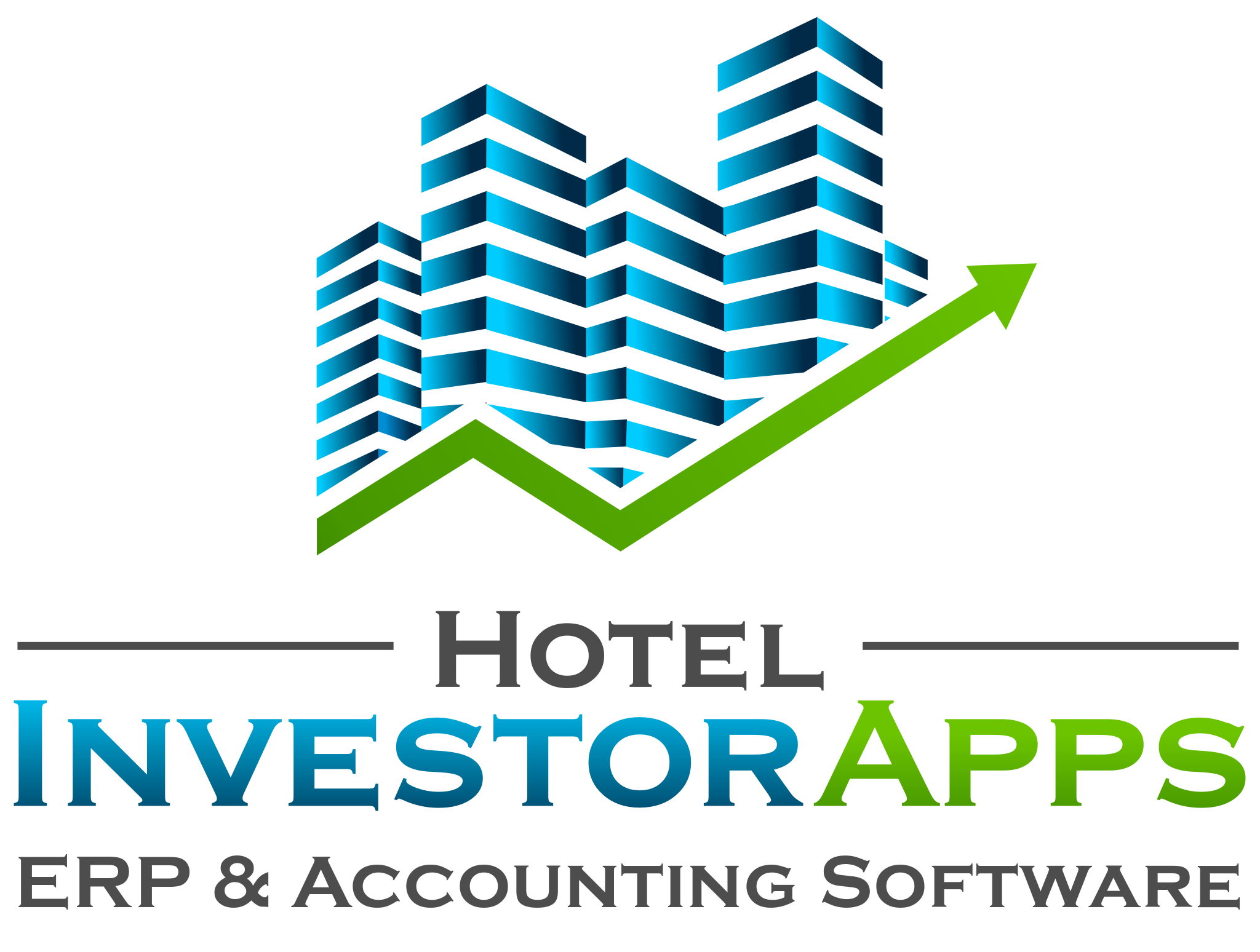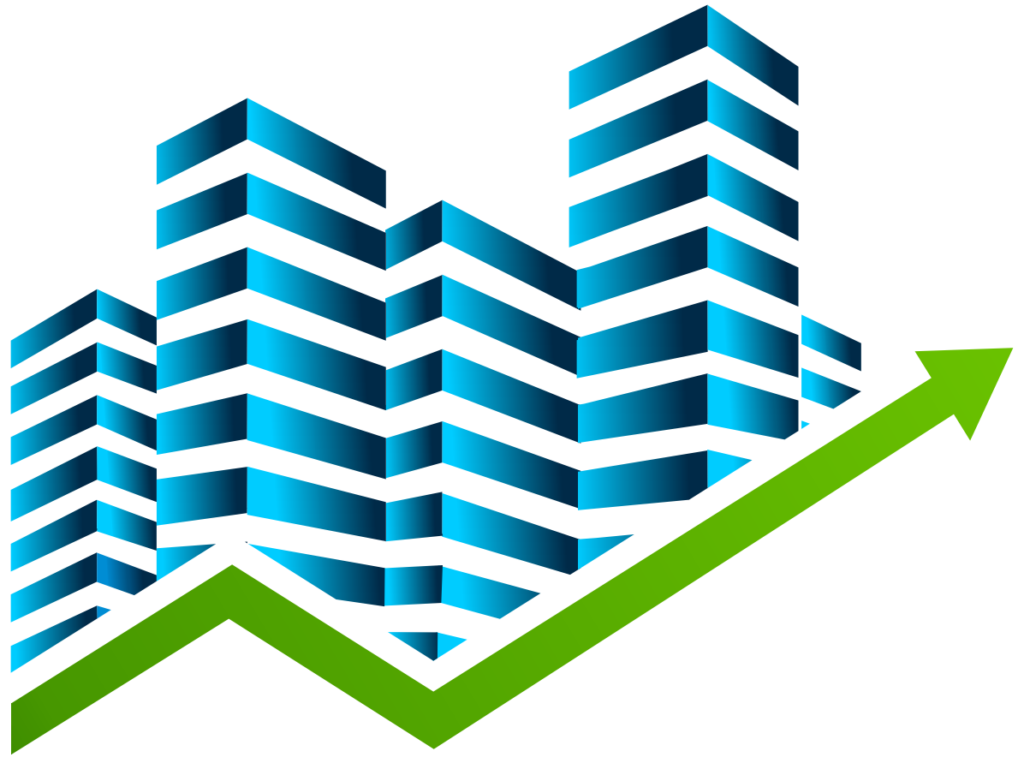The hospitality industry is a dynamic and evolving landscape, with hotel owners and managers striving to provide top-notch services while ensuring financial stability and growth.
One critical aspect of achieving this is understanding and utilizing daily hotel management reports.
In this guide, we’ll walk you through the different types of daily hotel management reports to enhance efficiency, maximize revenue, and drive growth. We’ll show you sample reports in dashboard format for at-a-glance access. Reports can also be viewed and shared in full report format for additional granularity.
Plus, we’ll give you some practical tips on how to improve your reports.
Types of Daily Hotel Management Reports You Need
Maximizing the efficiency of your hotel’s operations requires a thorough understanding of the daily reports available to you.
Each report has a unique purpose and provides valuable insights that can help you optimize your business. So, let’s explore the different types of reports and see how they can assist you in making informed decisions.
Property Flash Report
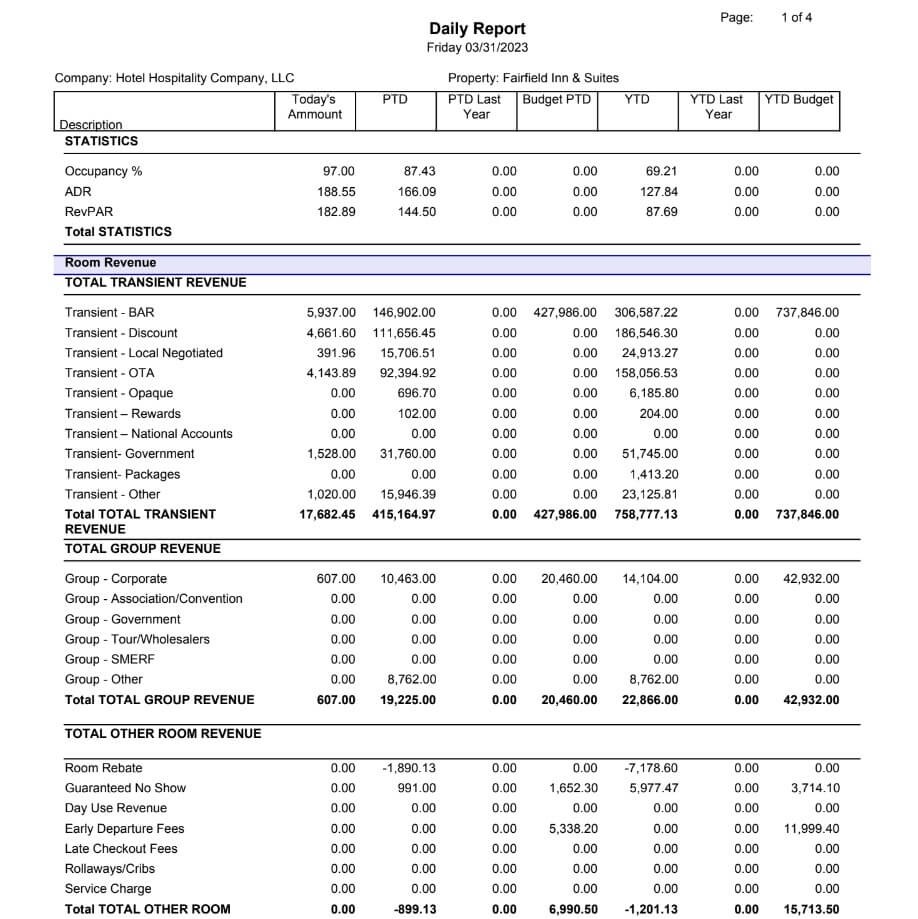
The Property Flash Report is a daily snapshot of a hotel’s key performance indicators (KPIs), offering a high-level overview of essential metrics like occupancy, average daily rate (ADR), revenue per available room (RevPAR), room revenue, total revenue, and more.
Hotel managers use this report to monitor their property’s performance, identify emerging trends or issues, and make informed decisions swiftly.
When you compare these numbers to your budget or forecast, you’ll see exactly where things might be off track, and you’ll be able to fix it.

Portfolio Flash Report

The portfolio flash report is your best friend if you manage multiple hotels (whether it’s a group within a region, ownership, brand, or an entire company portfolio).
Like the property flash, this report provides a quick overview of essential KPIs—except it consolidates the data from all your properties and gives you a comprehensive view of your entire portfolio’s performance.
It allows you to identify trends, potential issues, and areas for improvement. For instance, if one property consistently excels in RevPA , you can analyze its revenue management and consider applying similar tactics throughout your portfolio.
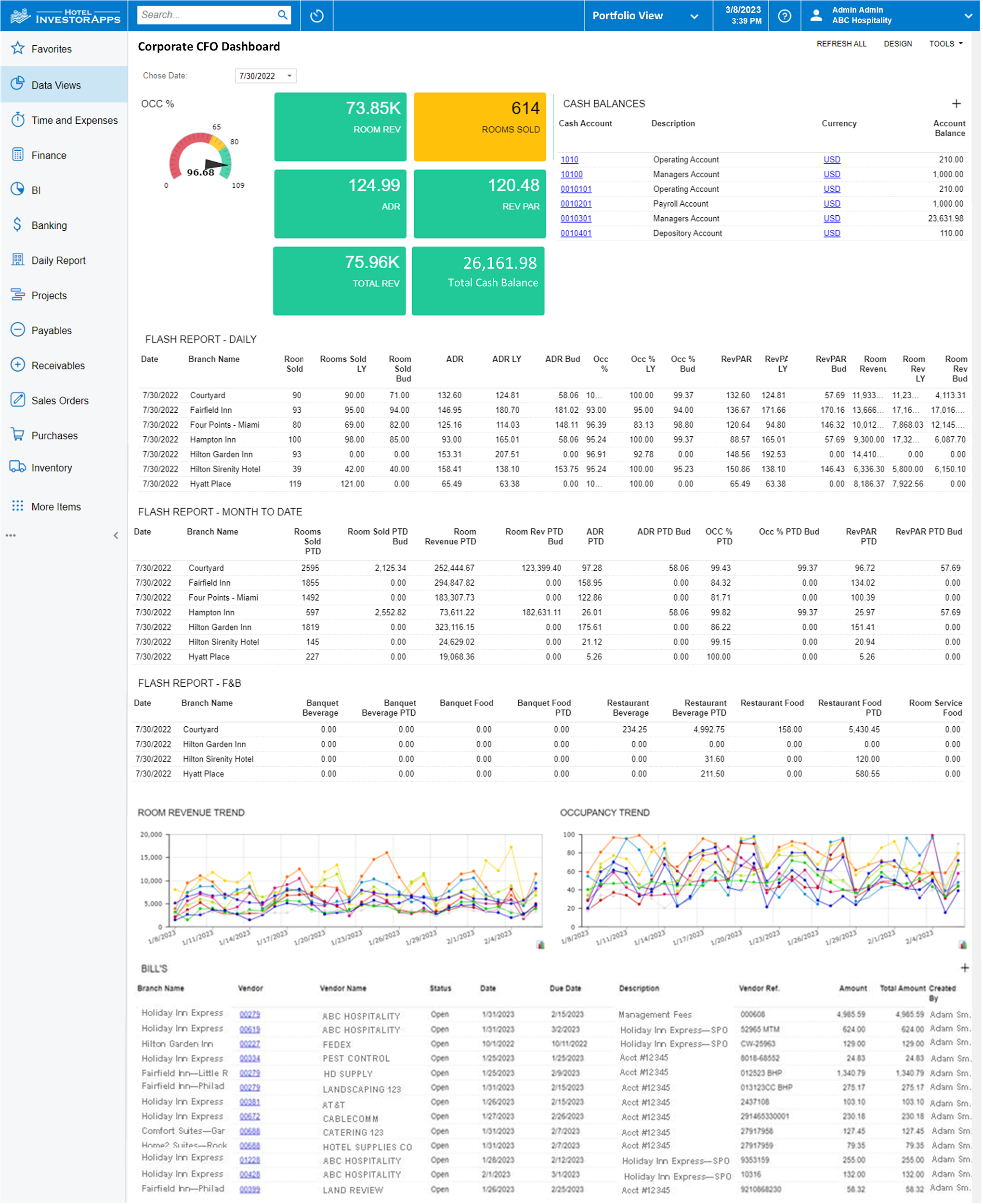
Labor Report
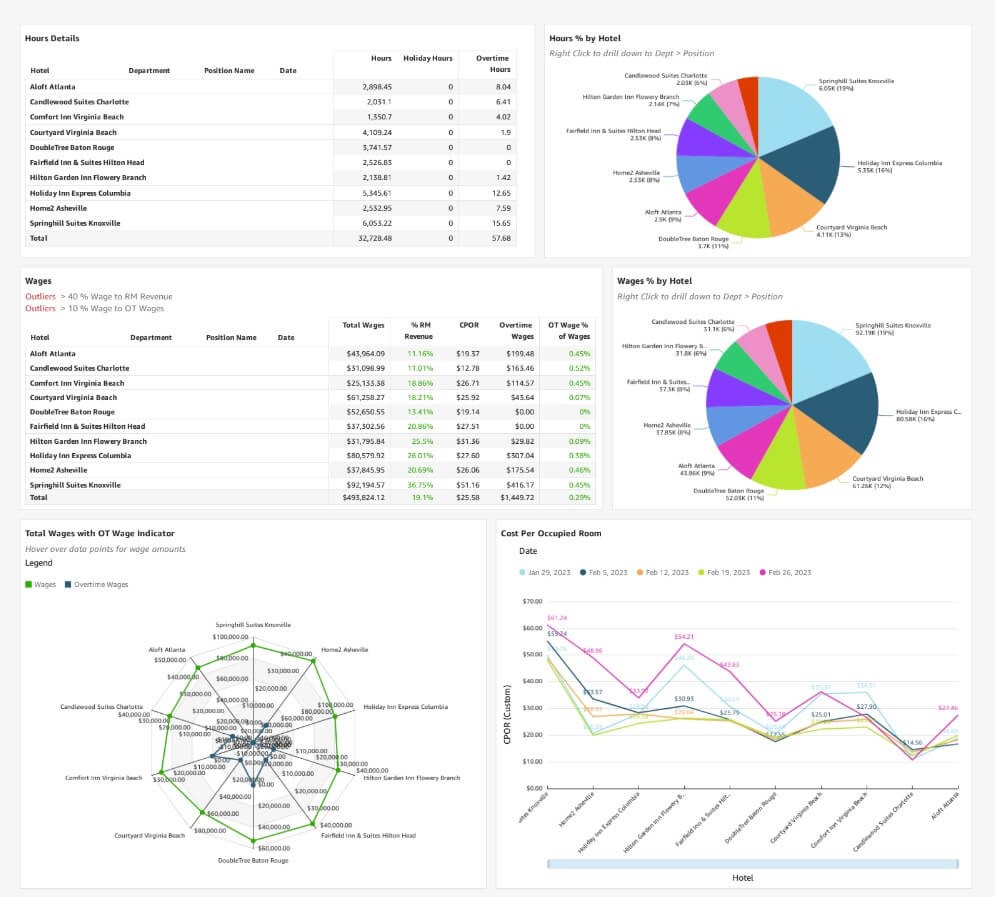
Labor reports are a vital tool for keeping up to date with workforce dynamics, staffing levels, and labor-related costs. It typically includes metrics like hours worked, overtime, revenue per labor hour, labor cost percentage, and more.
By regularly reviewing this report, you’ll identify inefficiencies, optimize workforce productivity, maintain ideal staffing levels, and control labor expenses.
For example, if you see overtime costs spiking on weekends, you might want to tweak your scheduling or bring in some part-timers to handle the extra demand. That way, you can keep labor costs in check and make sure your hotel runs smoothly.
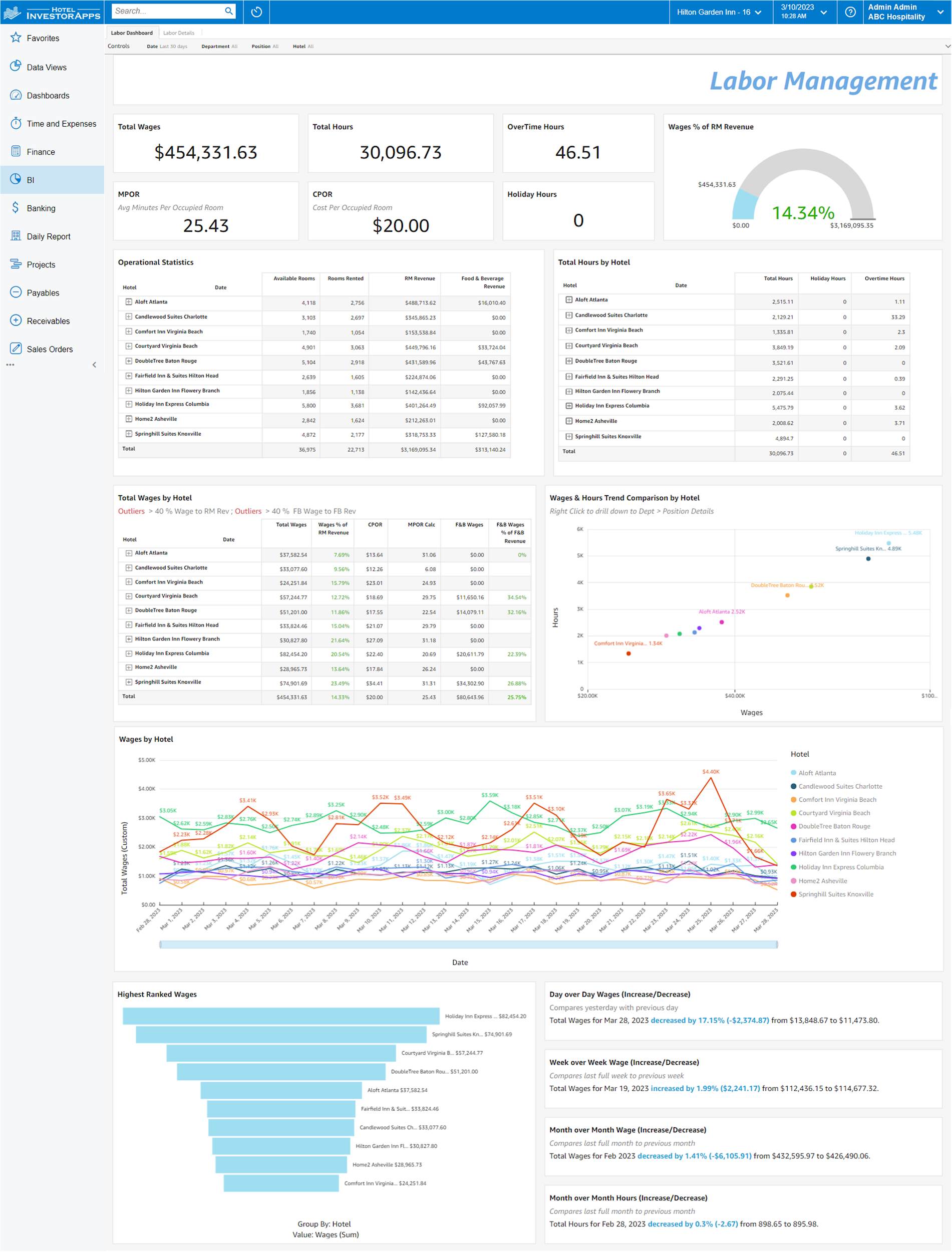
Bank Account Balance Report
Instead of logging into your different bank accounts each day to check the balances and manually recording them in an Excel spreadsheet, the bank account balance report helps maintain cash flow, ensures funds for daily operations, detects unusual transactions, and safeguards against potential financial risks.
These reports automatically compile bank balances and transactions, giving CFOs and Controllers an easy-to-understand snapshot of cash availability in all relevant accounts.
Using report schedulers to send real-time bank balance updates directly to decision-makers simplifies the process and cuts down on manual tasks.
Pro Tip: Customizing regions, portfolios, and account types allows for even greater flexibility and efficiency in financial management. For more information, check out this blog.
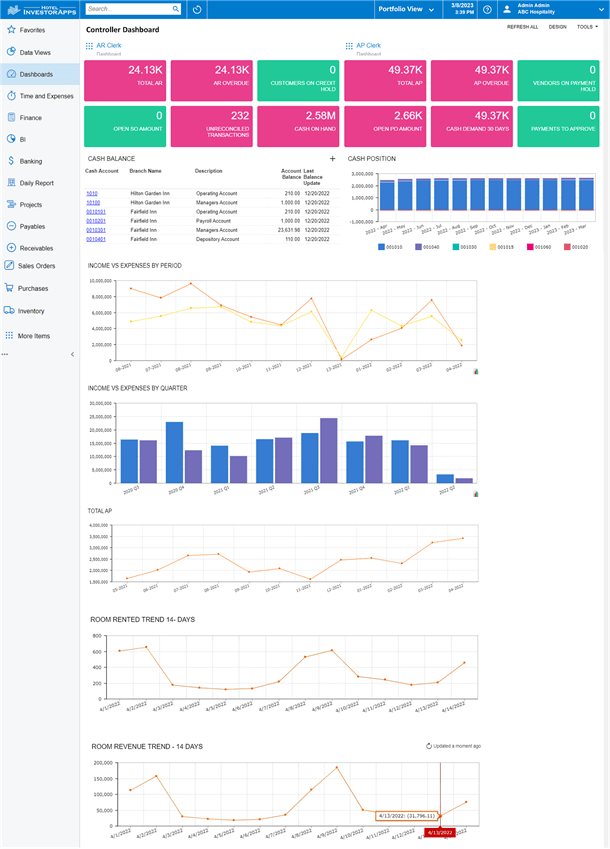
This is a sample labor management dashboard from HIA’s business intelligence tool.
Cash Position Report
The Cash Position Report, sometimes called a Check-book report, is a more comprehensive financial report that provides an overview of the hotel’s cash inflows and outflows.
This report is essential for managing your hotel’s liquidity effectively and includes information on daily revenue, expenses, accounts receivable, accounts payable, and any other cash-related transactions.
You should review this report regularly to monitor cash flow trends, optimize financial performance, and maintain financial stability.
Pro Tip: Having the ability to blend the bank balances onto the same report will make it easy to compare actual balances vs. the reported balances. HIA’s BankConnect feature lets you do just that. For more information click here.
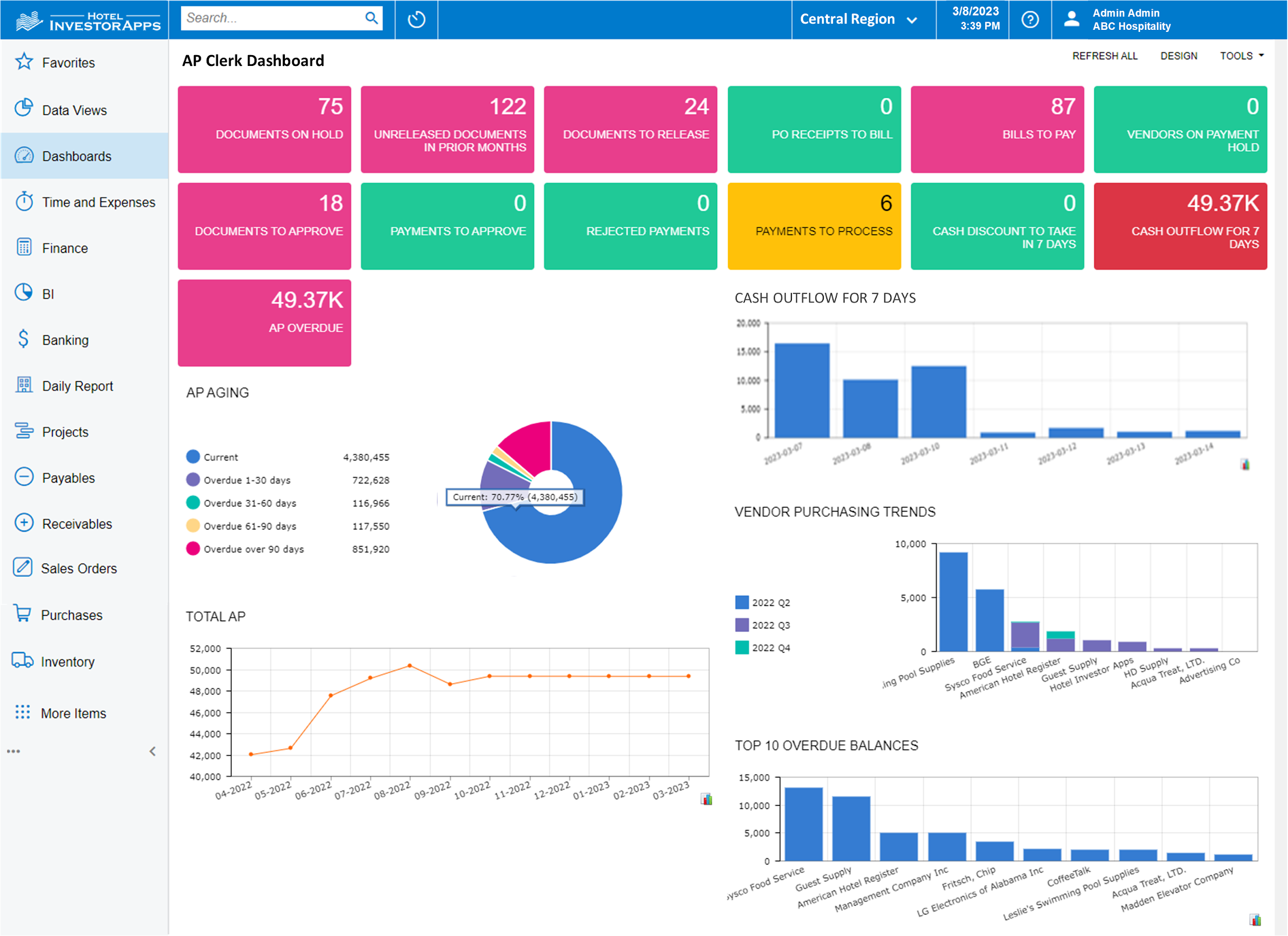
This is a sample of HIA’s AP Clerk dashboard used to monitor your hotel’s accounts.
| This is a sample of HIA’s AP Clerk dashboard used to monitor your hotel’s accounts. |
AP Aging (AP Register)

The AP Aging Report, also known as AP Register, is a crucial tool for managing your hotel’s outstanding bills and expenses effectively.
It displays a detailed breakdown of your accounts payable by age, vendor, and amount, enabling you to decide which invoices to pay based on available cash.
Reviewing this report helps maintain healthy vendor relationships, avoid late payment penalties, and improve cash flow management.

| This is a sample of an HIA dashboard that shows specific bill information. |
Tips to Improve Your Daily Hotel Management Reports
While those reports are crucial for monitoring your hotel’s performance and making informed decisions, they can be challenging to get right. That’s why we’ve put together some tips to help you improve them.
Timeliness
As a hotel owner or manager, receiving your daily hotel management reports in a timely manner is crucial for keeping a finger on the pulse of your operations. After all, timing is everything.
And not having the previous day’s reports ready for you in the morning can lead to poor decision-making—something you just don’t have the luxury to afford.
To make sure you’re getting what you need when you need it, you should:
- Establish clear reporting schedules and deadlines.
- Hold your team members accountable for meeting them.
- Automate certain aspects of the reporting process to ensure that reports are generated and distributed as quickly as possible.
Accuracy
In today’s digital world, data is king. But what good is that data if it’s not accurate?
Ensuring the accuracy of your daily hotel management reports is crucial for making informed decisions and maintaining a high level of service.
For example, a report that shows a 75% occupancy rate (but was actually supposed to read 55%) could lead to overstaffing or a lack of resources allocated to accommodate the actual number of guests.
To avoid these mishaps, double-check your data sources and implement automated systems to reduce human error.
Clarity
There’s nothing worse than sifting through dozens of spreadsheets trying to make sense of your data.
After all, these daily reports are responsible for tracking operations, evaluating past performance, and making informed decisions about future plans.
When these reports are unclear or confusing, it can be difficult to understand the data and make accurate assessments.
To improve the clarity of your daily reports, you should:
- Focus on critical information to meet your goals and guide your overall strategy.
- Simplify your reports by removing unnecessary information that isn’t related to a specific role or function.
- Use a data analytics tool that lets you quickly visualize your data.
Relevance
Every hotel is unique, with its own set of priorities and challenges.
That’s why it’s crucial to tailor your daily hotel management reports to your specific needs—focusing on the information that truly matters, helping you make better decisions, and improving your hotel’s performance.
For example, if your hotel specializes in hosting conferences and events, you’ll pay close attention to metrics like banquet revenue and event bookings.
Focus on these things to make sure your report is relevant:
- Include data that affects hotel operations, finances, guest satisfaction, and marketing.
- Prioritize key performance indicators (KPIs) that align with your hotel’s strategic goals when creating reports.
- Update your reports regularly as the hotel’s needs and industry trends change.
Actionable Insights
Last but certainly not least, let’s talk about the whole point of your daily reports—actionable insights. These are the keys to seeing what’s really happening at your hotel and figuring out what you can do to make things better.
For example, if your report highlights a consistent dip in occupancy on Tuesday evenings, you could introduce a special promotion to boost business during that slow period.
To turn raw data into tangible actions that drive positive change, you should:
- Find patterns, trends, and anomalies in the data that can help you improve or grow.
- Open up the discussion and brainstorm possible solutions with different departments.
- Provide clear recommendations or action items in the report to guide management in making data-driven decisions.
Unlock Even More Daily Reporting Capabilities With HIA
As you can see, mastering daily hotel management reports is essential to optimize your hotel’s operations and increase profitability.
But without a powerful platform to unify all your data, you’ll spend precious hours pouring over multiple spreadsheets trying to make sense of all your information.
That will never be the case with a powerful dashboard reporting solution like HIA.
We deliver a state-of-the-art approach that replaces traditional spreadsheet reporting with visually captivating, dynamic dashboards. Get an all-encompassing view of your hotel’s performance and enjoy:
- Customizable dashboards that can be tailored to your unique needs.
- Drill-down capabilities that let you go beyond surface-level data and delve into the specifics.
- Real-time updates and performance tracking to i emerging trends or issues.
- A centralized platform for managing and collating all your hotel data, so it’s easier to collaborate and share insights across departments.
- Automated reporting that saves time and reduces the risk of human error.
- Advanced analytics tools to help you uncover hidden patterns, trends, and opportunities, transforming raw data into actionable insights for strategic decision-making.
Want to learn more? Reach out to our team.

Charlie Fritsch, CEO and Founder of HIA, is dedicated to providing hoteliers with top-tier financial management and business intelligence tools. Bringing 30+ years of hospitality industry experience, when Charlie founded HIA in 2015, he set out to not only improve the business outcome of hospitality companies, but to improve the quality of life for employees across the organization with easy to use software which offers automations to reduce manual labor and improve accuracy while delivering better insights.
